Examining the Prehistoric Etowah Valley Timeline at the Dabbs Site, Bartow County, GA Through Ceramic and Radiocarbon Dating
Savana L. Deems (Kennesaw State University)
Terry G. Powis (Kennesaw State University)
Introduction
The Dabbs Site is located two miles (3.25 kilometers) northwest of the Etowah Indian Mounds on the second terrace above the Etowah River, and directly across from the Middle Woodland Leake Site. The property is under the private ownership of the Dabbs family and has been used for farming for over 100 years. In 2012, the junior author began an archaeology field school on this property to train archaeology KSU students in the techniques used in the field by professional archaeologists (Turner et al. 2014) (Figure 1). The goal of the research at this site is to determine if there is a connection between this small village site and the larger Etowah and Leake sites.
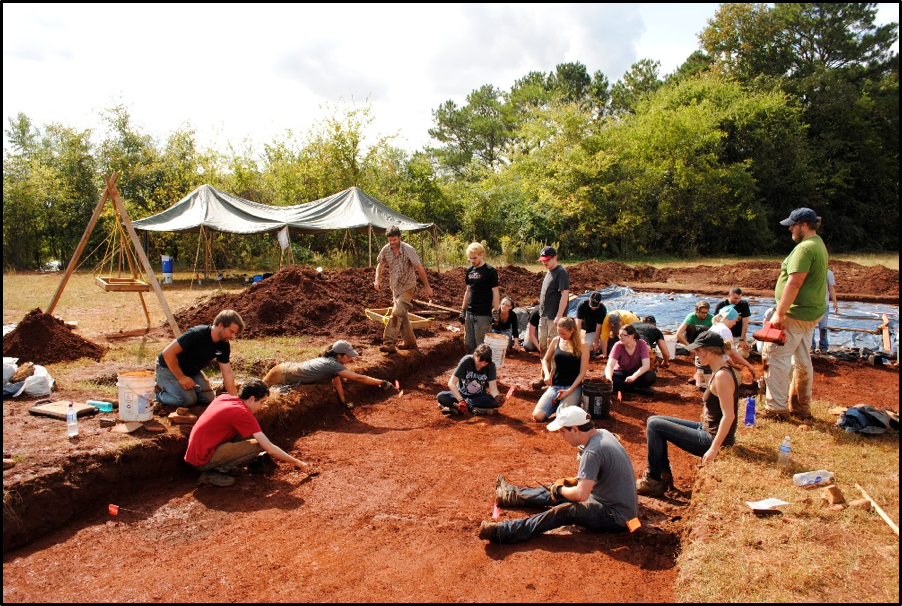
Figure 1. Dabbs Site archaeology field school 2014. Photo courtesy of Terry G. Powis.
Site Description
The site measures about 25 meters east to west, and about 30 meters north to south (Figure 2). This area contains 77 excavated features, comprised of post holes, refuse pits, one burial that was removed to be repatriated on tribal lands, and several large cylindrical storage pits. To date, no housing structures have been found at this site. Thirty-one of the 77 features contained artifacts including seeds, nuts, and corn, charcoal, chert tools and chert debitage from the knapping of the tools, shell beads, a shale gorget, and other worked stone. Twenty-eight of these 31 features contained ceramic sherds of various sizes and preservation due to the plowing and erosion of the site over the generations.
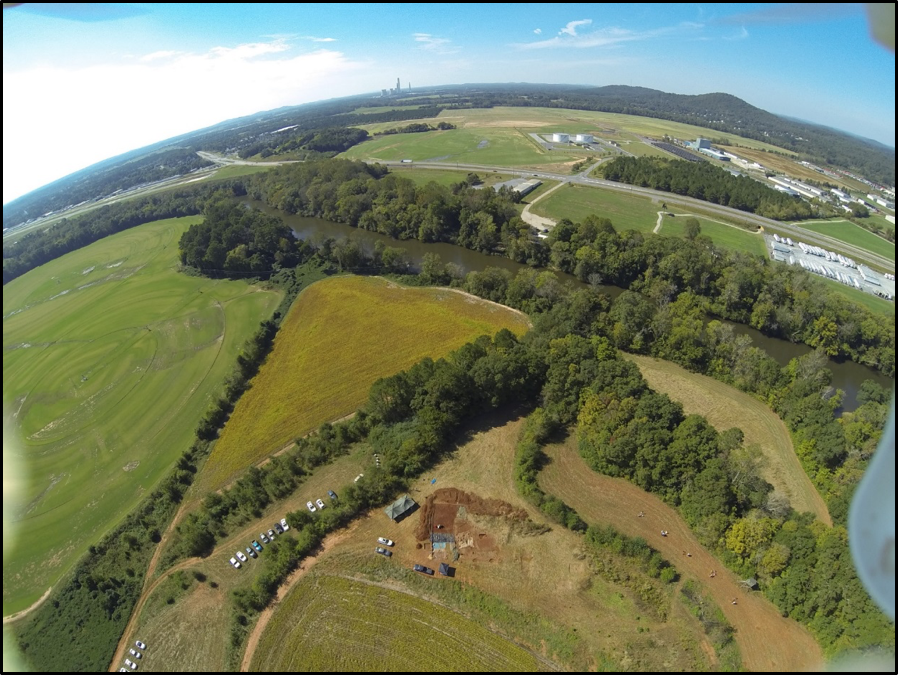
Figure 2. An aerial drone picture of the Dabbs Site. Photo courtesy of Andrew Vaughan.
Ceramic and Radiocarbon Dating
Research began in 2016 to date the site using the ceramic sherds and radiocarbon dates from charcoal, seeds, and nuts found within the cultural features (Deems and Powis 2016). Ceramics are often used to help date a site as the materials used to make the pottery, and the designs that are pressed, stamped, scraped, or painted on a vessel change over time, much like how modern housewares go in and out of style. This information, when compared to the data from a radiocarbon reports, creates a much more detailed timeline for a site, and allows archaeologists to better understand the cultural periods and their overlaps within a site. There are many resources in the State of Georgia to help date cultural materials like ceramics, such as Guide to Georgia Indian Pottery Types published in Early Georgia in 1999 by Mark Williams and Victor Thompson, The Georgia Indian Pottery website created by the University of Georgia, and Memoirs of the Society for American Archaeology by Robert Wauchope published in 1966. Adam King’s 2001 paper entitled Long-Term Histories of Mississippian: The Developmental Sequence of Etowah and Its Comparison to Moundville and Cahokia provided us with a better understanding of the cultural timelines in the Etowah River Valley.
We began by looking at the ceramics that were recovered at the site over the past four years. Overall, there were 2,050 sherds, 874 of which were determined to have some sort of decoration. Four hundred and fifty of these decorated sherds had enough of a visible design to be categorized into decoration types. These types were generalized into brushed, roughened, rectilinear stamped, checked stamped, and complicated stamped. Rectilinear, checked stamped, and complicated stamped pottery were the most abundant types found, all made with carved wooden paddles that would have been pressed into a vessel when the clay was leather hard before it was fired. These general decoration types were then categorized into established pottery types such as Woodstock Checked Stamped, Woodstock Complicated Stamped or Napier Complicated Stamped, Etowah Line Blocked Stamped, and Etowah Complicated Stamped or Wilbanks Complicated Stamped. These type names allowed us to establish a cultural occupation timeline at the site from the Late Woodland to the Middle Mississippian (AD 700-1350) time periods (King 2001:2-8).
Seventy-nine of the sherds were determined to be checked stamped (Figure 3). This style features square, rectangular, or diamond shaped checks created with a wooden paddle carved with the design. The checks can be quite large, resembling a waffle, to very small checks, and everything in between. The average size of the checks on these sherds was 0.2 mm x 0.1 mm forming a rectangular check, and 33 sherds had square checked designs averaging at 0.2 mm. This size of the checked stamps in addition to the sand and grit material in the clay, or temper, dated these sherds to the Late Woodland period or Woodstock Checked Stamped (AD 700-1000) (King 2001:2-8; Williams and Thompson 1999:141). Two sherds had much larger checked stamped designs at 0.6 mm x 0.4 mm and 0.5 mm x 0.3 mm. The bulk of these types of sherds came from cylindrical storage pits numbered Features 2, 5, 10, 16, and 50 with the two larger checked stamped design coming from Feature 26, also a cylindrical storage pit, and Feature 15, the feature that contained the burial.

Figure 3. Checked Stamped Pottery from the Dabbs Site. Photo courtesy of Savana Deems.
The Woodstock Complicated Stamped and Napier Complicated Stamped designs also date to the same time period as the Woodstock Checked Stamped with some overlap into the Early Mississippian period (AD 1000-1100). These designs exhibit vertical diamond or oval nested lines with parallel horizontal line fillers on sand of grit tempered clay (Figure 4). The rises and falls, or lands and grooves, in the stamping are relatively close together in some of the sherds, which is more common to the Napier Complicated Stamped, but the overall design is very similar between this type and the Woodstock Complicated Stamped. Seventy-five sherds in the collection featured these designs, 72 of which came from Feature 2, where the Woodstock Checked Stamped were also found. This information places the dates for these sherds from AD 900-1250, showing occupation from the Late Woodland Period to the Early Mississippian period at the site (King 2001:2-8; Williams and Thompson 1999:137, 143).
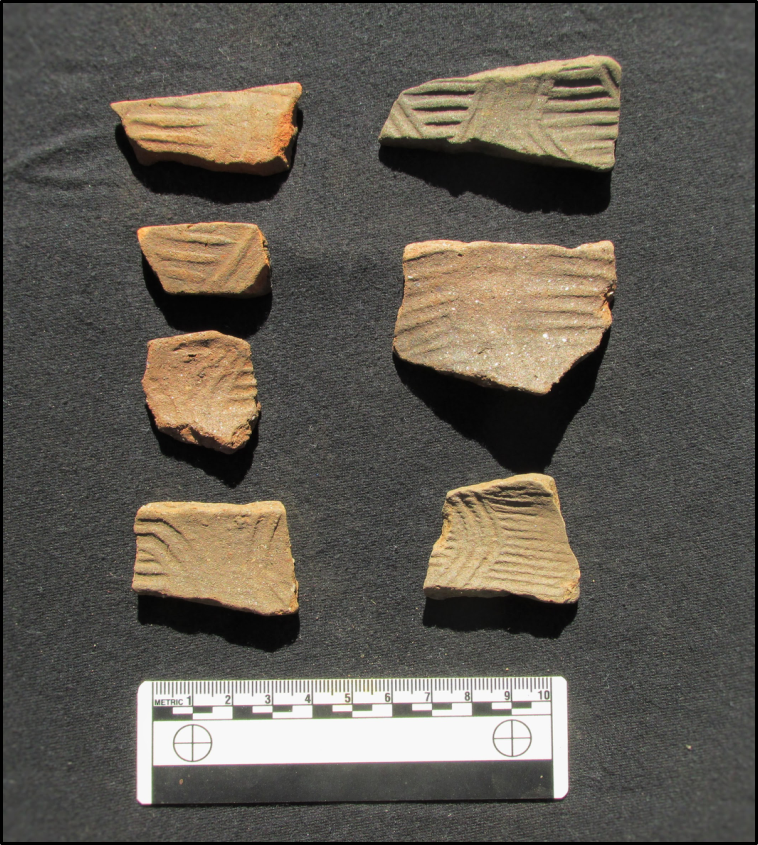
Figure 4. Woodstock Complicated/Napier Complicated Stamped pottery from the Dabbs Site. Photo courtesy of Savana Deems.
Another ceramic type, the Etowah Line Blocked or Etowah Complicated Stamped,
takes the occupation timeline from the Late Woodland to Early Mississippian periods into the Middle Mississippian period or AD 1250-1375 (King 2001:2-8; Williams and Thompson 1999:44). This design is comprised of sets of horizontal lines next to sets of vertical lines carved into the same paddle (Figure 5). The grit temper in the clay also helps to determine these sherd’s types, as there is a similar design on earlier pottery, but the earlier pottery type is on a sand tempered clay. This type is one of the smallest sets of ceramic types at 46 total sherds, 33 sherds were found in Feature 50, and 13 in Feature 2.
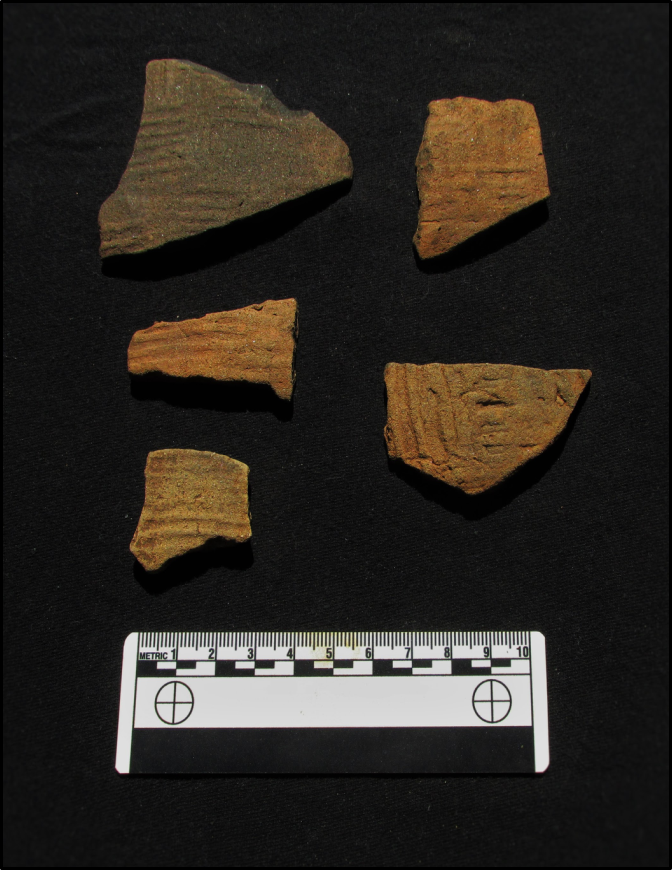
Figure 5. Etowah Line Blocked Stamped Pottery from the Dabbs Site. Photo courtesy of Savana Deems.
The last major pottery types found at the Dabbs Site are Etowah Complicated Stamped and Wilbanks Complicated Stamped. Etowah Complicated Stamped has many different motifs, the most common being nested diamonds, but also filfot crosses, concentric circle scrolls, lines and circles, line blocked, and bullseyes (Figure 6). Wilbanks Complicated Stamped is very similar to some of the Etowah Complicated Stamped, featuring swirls and concentric circles that often overlap, but are notably different in that the walls of the vessels are much thicker than the delicate thin walls of the Etowah Complicated Stamped. The sherds from Feature 50, where 175 of this type were found, have a range of motifs and wall thicknesses, varying from 0.5 mm to 1.4 mm, with an average wall thickness of 0.6 mm. This overlap in types in the same feature show that there is a cultural overlap at this site from the Early Mississippian to the Middle Mississippian cultural period from AD 1000-1375 (King 2001:2-8; Williams and Thompson 1999:42-43, 137).

Figure 6. Etowah Complicated Stamped/Wilbanks Complicated Stamped Pottery from the Dabbs Site. Photo courtesy of Savana Deems.
We also sent 10 charcoal samples, one nutshell, and one maygrass seed to Beta Analytic Inc., in Miami, Florida to obtain radiocarbon dates for the site and determine if this data matched the ceramic dates we saw from the sherds found in the features. The seeds and nuts were obtained by Leslie E. Branch-Raymer (Paleobot Consulting) and Amber Avery (Kennesaw State University) by a technique called flotation, a method that utilizes water, buckets, and screens to separate the plant material from the soil. This was done on the banks of the Etowah River near the site and in the lab at KSU. Some of these samples provided results that supported the ceramic dates and creating a Late Woodland to Middle Mississippian cultural period timeline, while some did not. Further radiocarbon testing is slated for early in 2017, but thus far, we find that dating charcoal and charred plant samples are not the best means to provide additional dating methods for the Dabbs Site.
Features 44, 46, 47, 51, and 52 all contained charcoal for radiocarbon dating (Figure 7). Feature 44 contained Late Woodland ceramics, but the calibrated radiocarbon dates came back as 1946-1782 BC, or the Late Archaic period. Feature 46 contained ceramics that were not datable and calibrated radiocarbon dates of 1734-1617 BC, again, Late Archaic. We know that the ceramics do not match the time period because the ceramics of the Late Archaic, Stallings pottery, is very distinct in being of poor quality, tempered with Spanish Moss, and have very thick walls to the vessels. Feature 51 had similar results in that the pottery was certainly not Stallings, but the charcoal sample’s calibrated radiocarbon date is 1691-1535 BC, and the nutshell calibrated radiocarbon date is 1875-1665 BC. Feature 52 also had a Late Archaic calibrated radiocarbon date from charcoal at 1948-1771 BC with no Stallings pottery. Feature 47 did not contain pottery and the charcoal sample came back with calibrated radiocarbon dates of 2025-1912 BC. All of these features are in close proximity to one another within the site, and a possible explanation for the ceramic dates and radiocarbon dates not meshing well could be attributed to the backfill for these features coming from a source that had been part of a much earlier burning event near the site.
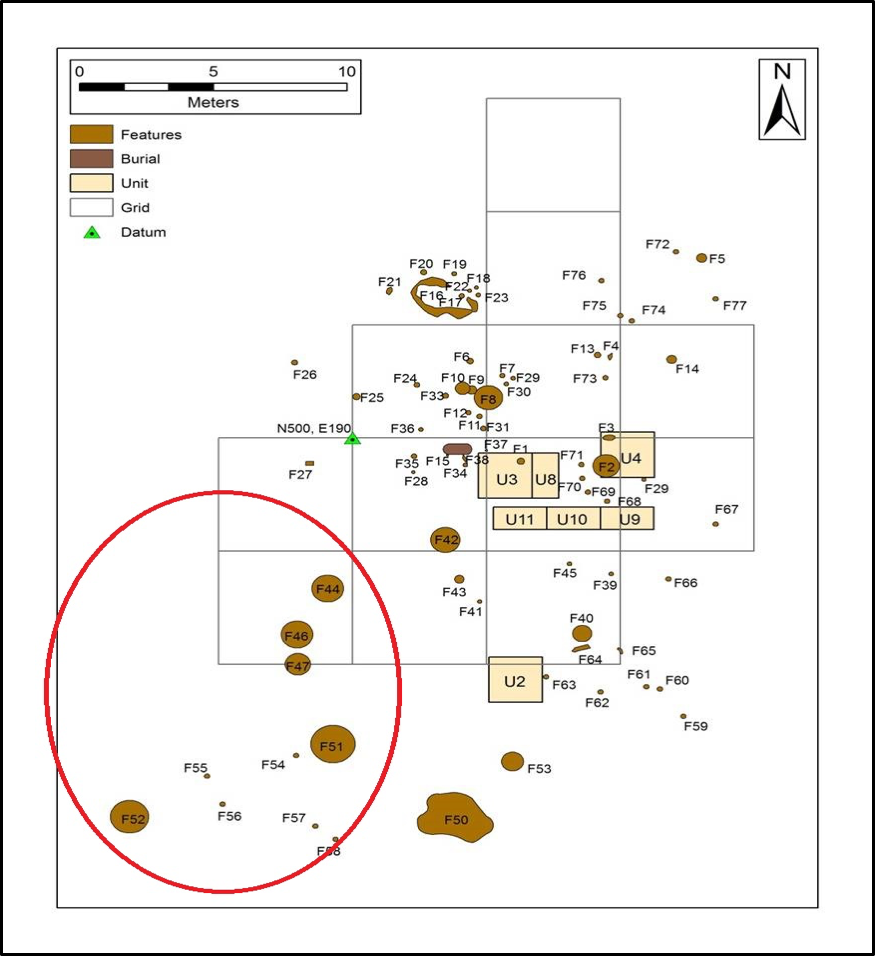
Figure 7. Plan view of Dabbs Site showing location of cultural features. Map courtesy of Jeff Turner.
A similar issue is also seen with the ceramic and radiocarbon dates for Feature 1. The charcoal obtained from this feature has a calibrated radiocarbon date of 201-45 BC, placing it in the Middle Woodland period. However, the ceramics date to the Early Mississippian period of AD 1000-1100 (King 2001:2-8). The burial at Feature 15 provided 35 sherds and a charcoal sample. The calibrated radiocarbon date for the feature is AD 1268-1382, placing it at the Middle Mississippian cultural period, but the checked stamped pottery types found in the feature could be Woodstock Checked Stamped, much earlier than the burial, or a type that is seen nowhere else at the site called Savannah Checked Stamped.
Two hundred and sixty-six decorated sherds came from Feature 2, as well as two charcoal samples and a maygrass seed used for radiocarbon dating. The charcoal samples have calibrated radiocarbon dates of AD 1050-1250 and AD 1157-1259 or the Early to Middle Mississippian period. The maygrass seed has calibrated radiocarbon dates of AD 715-890 or the Late Woodland period. The ceramics for this feature date to the Late Woodland to Early Mississippian period, showing an overlap in cultural periods seen at the site. Feature 50 was ceramically dated to AD 1250-1375, or the Middle Mississippian period, and a charcoal sample’s calibrated radiocarbon date is AD 1336-1464, or the Late Mississippian period (Figure 8). Here again, we see an overlap in cultural time periods at the site, much like that found in Feature 2.
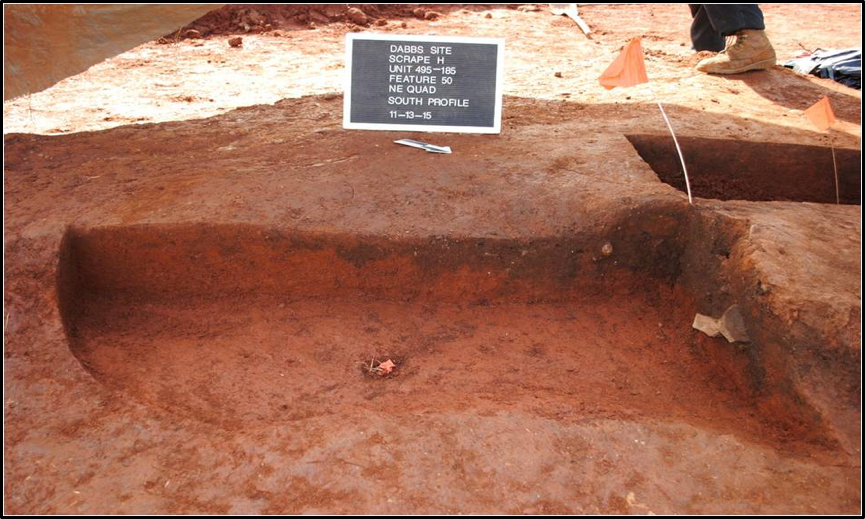
Figure 8. Profile of Feature 50 at the Dabbs Site. Photo courtesy of Terry G. Powis.
Summary
To summarize, the goal of our research is to use the two main methods of dating a site to create the most accurate timeline for the Dabbs Site and then understand how it fits in with the Etowah River Valley’s timeline as a whole. The ceramics from the site date from the Late Woodland to Middle Mississippian cultural periods or AD 700-1375. The radiocarbon dates from the site date from the Late Archaic to the Late Mississippian cultural periods or 3000-1000 BC to AD 1375-1550. These two sets of data were compared to better understand the timeline for the Dabbs Site and how it fits in with the rest of the Etowah River Valley’s timeline as a whole. There are some major differences in dates for some of the features, where the samples used for radiocarbon dating may not be the best sources to date the site, while others show that there is a cultural period overlap present at the site. This research is ongoing and collaborative to insure that the research at the site is as complete and accurate as possible.
Acknowledgments
We are most grateful to the landowners, Andy and Sharon Dabbs, who have allowed us access to their property for the past five years. Their passion for learning about the prehistory of Bartow County is unparalleled in our combined experience in north Georgia. Many individuals have contributed to our understanding of the site, including Adam King, Scot Keith, Leslie Branch-Raymer, Carl Etheridge, Jeff Turner, and Amber Avery. We want to thank Gene Camp, David Randall, and James Mullinax of the City of Cartersville for their continued interest in our archaeological investigations. We also want to thank Chris Patrick, Ron Hatfield, and Darden Hood of Beta Analytic Inc. for their interpretative help with the radiocarbon dates. Finally, we want to thank the 96 KSU undergraduate field school students and 30 staff members who have eagerly helped us investigate the Dabbs Site. We are very grateful of their time, hard work, professionalism, and smiling faces during the course of our research. Finally, we would like to thank the Etowah Valley Historical Society (EVHS) for their continued support of our research. Their website and lectures series plays a key role in making work like ours truly public archaeology. We also want to acknowledge Joe Head, of EVHS, who has visited us many times on site and we are appreciative for the fruitful discussions we have had about the early inhabitants of Bartow County.
Glossary of Pottery Types by Appearance in Text:
Woodstock Checked Stamped: Very small waffle like design with sand/grit temper.
Woodstock Complicated Stamped: Nested diamonds with horizontal lines and sand temper.
Napier Complicated Stamped: Similar to Woodstock Complicated Stamped except with thinner walls.
Etowah Line Blocked Stamped: Alternating vertical and horizontal lines with grit temper.
Etowah Complicated Stamped: A variety of complex designs with sand/grit temper.
Wilbanks Complicated Stamped: Large stamped designs with thick walls and grit temper.
Stallings: Earliest pottery type in Georgia with rough, thick walls and Spanish moss temper.
Note: All of these pottery types and associated temporal ranges can be found on this website: https://archaeology.uga.edu/gip/welcome
References
Deems, Savana, and Terry G. Powis
2016 Reexamining the Woodland and Mississippian Cultural Periods in Bartow County, Georgia. Paper presented at the 73rd annual meeting of the Southeastern Archaeological Conference, Athens, GA. October, 28.
King, Adam
2001 Long Term Histories of Mississippian Centers: The Developmental Sequence of Etowah
and Its Comparison to Moundville and Cahokia. Southeastern Archaeology 20 (1):1-17.
Turner, Jeffrey, Keener Smith, Jessica Griggs Burnette, Sheldon Skaggs, and Terry G. Powis
2014 Archaeological Prospection and Investigation of the Dabbs Site, Bartow County, Georgia. Early Georgia 42(2):143-161.
University of Georgia
2014 Georgia Indian Pottery Site. Laboratory of Archaeology. University of Georgia. https://archaeology.uga.edu/gip/welcome.
Wauchope, Robert
1966 Archaeological Survey of Northern Georgia with a test of Some Cultural Hypotheses. Memoirs of the Society for American Archaeology, Number 21. Salt Lake City, UT.
Williams, Mark, and Victor Thompson
1999 A Guide to Georgia Indian Pottery Types. Early Georgia 27(1):1-167.

